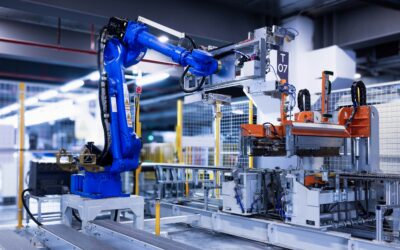In today’s fast-paced and ever-evolving business landscape, the concept of a self-optimizing business is gaining traction among entrepreneurs and organizations alike. This innovative approach leverages advanced technologies, including artificial intelligence and automation, to create a dynamic ecosystem that continuously improves its operations, enhances customer experiences, and drives profitability. As businesses strive to remain competitive, the need for a self-optimizing model becomes increasingly apparent.
Enter SMS-iT, the world’s first No-Stack Agentic AI Platform, which embodies this transformative vision by unifying CRM, ERP, and over 60 microservices into a single intelligent ecosystem. The self-optimizing business is not merely a trend; it represents a fundamental shift in how organizations operate. By harnessing the power of data and automation, businesses can streamline processes, reduce costs, and ultimately achieve results that were once only attainable by large enterprises.
SMS-iT stands at the forefront of this revolution, offering a solution that empowers entrepreneurs to automate outcomes effortlessly. In this article, we will explore the intricacies of self-optimizing businesses, their key components, and how SMS-iT can help you embark on this transformative journey.
Key Takeaways
- Self-optimizing business is a concept that focuses on continuously improving and adapting to changes in the market and business environment.
- Key components of a self-optimizing business include real-time data analysis, predictive analytics, and agile decision-making processes.
- Data and analytics play a crucial role in enabling a self-optimizing business to make informed decisions and identify areas for improvement.
- Implementing automation and artificial intelligence can help a business streamline processes, reduce human error, and optimize operations.
- Creating a culture of continuous improvement is essential for a self-optimizing business to thrive and stay ahead of the competition.
Understanding the Concept of Self-Optimizing Business
At its core, a self-optimizing business is one that utilizes technology to enhance its performance autonomously. This means that rather than relying solely on human intervention, these businesses leverage data-driven insights and automated processes to make informed decisions and adapt to changing market conditions. The goal is to create an agile organization that can respond swiftly to customer needs while minimizing inefficiencies.
Self-optimizing businesses are characterized by their ability to learn from past experiences and continuously refine their operations. This iterative process allows them to identify areas for improvement and implement changes that lead to better outcomes. With SMS-iT, organizations can seamlessly integrate various functions—such as sales, marketing, and customer service—into a cohesive system that not only tracks performance but also suggests optimizations based on real-time data analysis.
Key Components of a Self-Optimizing Business
Several key components define a self-optimizing business. First and foremost is the integration of advanced technologies like artificial intelligence and machine learning. These technologies enable businesses to analyze vast amounts of data quickly and accurately, providing insights that drive decision-making.
SMS-iT harnesses these capabilities to offer businesses a comprehensive view of their operations, allowing them to identify trends and opportunities for growth. Another critical component is automation. By automating repetitive tasks and processes, businesses can free up valuable time and resources that can be redirected toward strategic initiatives.
SMS-iT excels in this area by providing a suite of microservices that automate everything from lead generation to customer follow-ups. This not only enhances efficiency but also ensures that teams can focus on high-value activities that contribute to overall business success.
The Role of Data and Analytics in Self-Optimizing Business
Data is the lifeblood of any self-optimizing business. It provides the foundation for informed decision-making and enables organizations to understand their performance metrics in real-time. By leveraging analytics tools, businesses can gain insights into customer behavior, market trends, and operational efficiencies.
This data-driven approach allows for proactive adjustments rather than reactive measures. SMS-iT empowers businesses with robust analytics capabilities that transform raw data into actionable insights. With its intuitive dashboard, users can visualize key performance indicators (KPIs) and track progress toward goals effortlessly.
This level of visibility not only enhances accountability but also fosters a culture of continuous improvement as teams can identify areas needing attention and act accordingly.
Implementing Automation and Artificial Intelligence in Self-Optimizing Business
The implementation of automation and artificial intelligence is crucial for building a self-optimizing business. These technologies work hand-in-hand to streamline operations and enhance productivity. Automation reduces the burden of manual tasks, while AI provides the intelligence needed to make data-driven decisions.
With SMS-iT, businesses can easily implement automation across various functions without the need for complex integrations or outdated stacks. The platform’s user-friendly interface allows entrepreneurs to set up automated workflows tailored to their specific needs. Whether it’s sending personalized marketing messages or managing customer inquiries, SMS-iT simplifies the process, enabling businesses to operate more efficiently than ever before.
Creating a Culture of Continuous Improvement in Self-Optimizing Business
A self-optimizing business thrives on a culture of continuous improvement. This mindset encourages employees at all levels to seek out opportunities for enhancement and innovation. By fostering an environment where feedback is valued and experimentation is encouraged, organizations can drive meaningful change.
SMS-iT supports this culture by providing tools that facilitate collaboration and communication among team members. With features that allow for real-time feedback and performance tracking, employees are empowered to take ownership of their roles and contribute to the organization’s success. This collaborative approach not only boosts morale but also leads to better outcomes as teams work together toward common goals.
Overcoming Challenges in Building a Self-Optimizing Business
While the benefits of a self-optimizing business are clear, there are challenges that organizations may face during implementation. Resistance to change is one of the most significant hurdles; employees may be hesitant to adopt new technologies or processes. To overcome this challenge, it is essential to communicate the value of self-optimization clearly and provide training and support throughout the transition.
Another challenge is ensuring data quality and integrity. For a self-optimizing business to function effectively, it must rely on accurate data inputs. SMS-iT addresses this concern by offering robust data management tools that ensure information is consistently updated and reliable.
By prioritizing data quality, businesses can maximize the effectiveness of their self-optimizing initiatives.
Case Studies of Successful Self-Optimizing Businesses
Numerous organizations have successfully embraced the self-optimizing business model with remarkable results. For instance, a mid-sized e-commerce company implemented SMS-iT’s platform to streamline its operations. By automating order processing and utilizing AI-driven analytics, they reduced fulfillment times by 30% while increasing customer satisfaction scores significantly.
Another example is a service-based company that leveraged SMS-iT’s CRM capabilities to enhance client engagement. By automating follow-up communications and utilizing data insights to tailor their offerings, they experienced a 25% increase in client retention rates within just six months. These case studies illustrate how self-optimizing businesses can achieve tangible results through strategic implementation of technology.
The Future of Self-Optimizing Business
The future of self-optimizing businesses looks promising as technology continues to advance at an unprecedented pace. As artificial intelligence becomes more sophisticated, organizations will have access to even deeper insights and more powerful automation capabilities. This evolution will enable businesses to adapt more quickly to market changes and customer demands.
Moreover, as more companies recognize the value of self-optimization, we can expect an increase in collaboration between technology providers like SMS-iT and businesses seeking innovative solutions. This partnership will drive further advancements in automation and analytics, ultimately leading to more efficient and effective business operations across industries.
Steps to Start Building a Self-Optimizing Business
For entrepreneurs looking to embark on the journey toward building a self-optimizing business, several steps can guide the process. First, assess your current operations and identify areas where automation could enhance efficiency. Next, explore platforms like SMS-iT that offer integrated solutions tailored to your specific needs.
Once you’ve selected a platform, invest time in training your team on how to leverage its features effectively. Encourage a culture of continuous improvement by regularly reviewing performance metrics and seeking feedback from employees. Finally, remain open to experimentation; the path to self-optimization is an ongoing journey that requires adaptability and innovation.
The Benefits and Potential of Self-Optimizing Business
In conclusion, the concept of a self-optimizing business represents a transformative approach to modern entrepreneurship. By leveraging advanced technologies like SMS-iT’s No-Stack Agentic AI Platform, organizations can streamline operations, enhance customer experiences, and drive sustainable growth. The benefits are clear: reduced costs, increased efficiency, and improved outcomes that empower entrepreneurs to compete on a larger scale.
As you consider the potential of building a self-optimizing business, remember that the journey begins with taking action today. Explore SMS-iT’s 7-day free trial at https://www.smsit.ai and discover how this innovative platform can help you unlock new levels of efficiency and success in your organization. Embrace the future of business with confidence—your path toward self-optimization starts now!
FAQs
What is a self-optimizing business?
A self-optimizing business is a company that uses data, technology, and automation to continuously improve its operations, processes, and decision-making without the need for human intervention.
What are the key components of a self-optimizing business?
The key components of a self-optimizing business include advanced analytics, machine learning algorithms, artificial intelligence, real-time data processing, and automated decision-making systems.
How does a self-optimizing business use data and technology to improve its operations?
A self-optimizing business uses data and technology to collect, analyze, and interpret large volumes of information in real-time. It then uses this information to make data-driven decisions, automate processes, and continuously optimize its operations.
What are the benefits of a self-optimizing business?
The benefits of a self-optimizing business include improved efficiency, reduced operational costs, better decision-making, enhanced customer experiences, and the ability to adapt to changing market conditions more effectively.
What are some examples of self-optimizing businesses?
Examples of self-optimizing businesses include e-commerce platforms that use machine learning to personalize product recommendations, manufacturing companies that use predictive maintenance to reduce downtime, and financial institutions that use AI to detect fraud in real-time.









